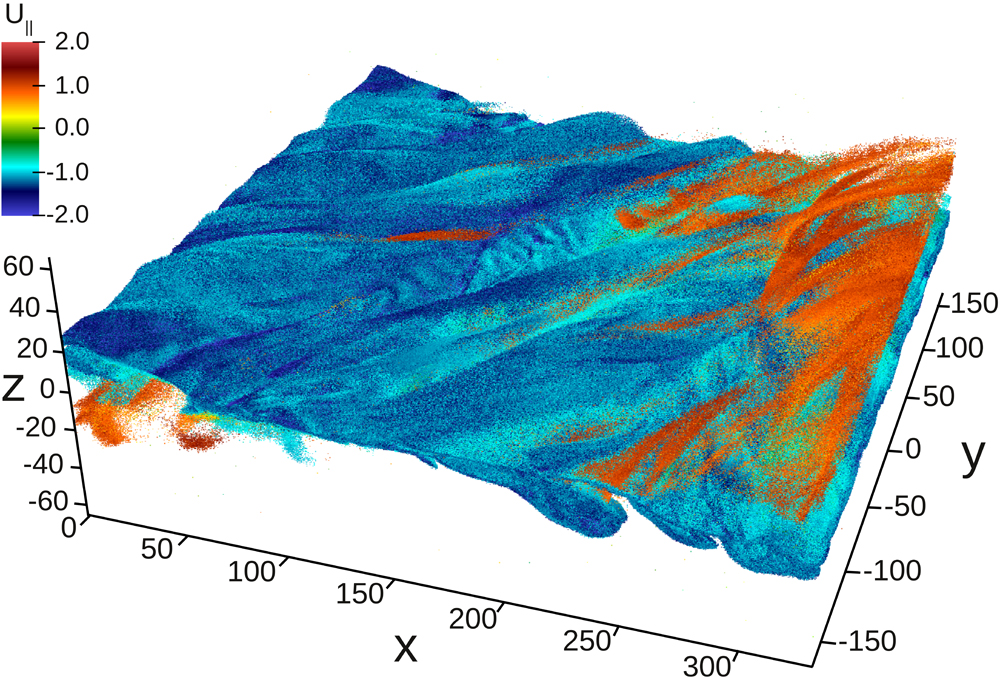HiPACC Computational Astronomy Press Room. From: LANL
The Press Room highlights computational astronomy work around the UC-HiPACC consortium; the wording of the short summaries on this page is based on wording in the individual releases or on the summaries on the press release page of the original source. Press releases below appear in reverse chronological order (most recent first); they can also be displayed by UC campus or DOE lab by clicking on the desired venue at the bottom of the left-hand column.
December 6, 2013 — Neutron stars’ X-ray superbursts mystify, inspire Los Alamos scientists
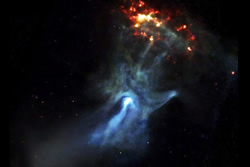
A small, dense object only 12 miles in diameter is responsible for this beautiful X-ray nebula. (Image: NASA)
Massive X-ray superbursts near the surface of neutron stars are providing a unique window into the operation of fundamental forces of nature under extreme conditions. So much energy escapes by neutrino emission that the remaining energy released in the beta decays is not sufficient to ignite the X-ray superbursts that are observed. Thus the superbursts’ origin is a puzzle.
View full Los Alamos National Laboratory press release.
November 21, 2013 — Black hole birth captured by cosmic voyeurs
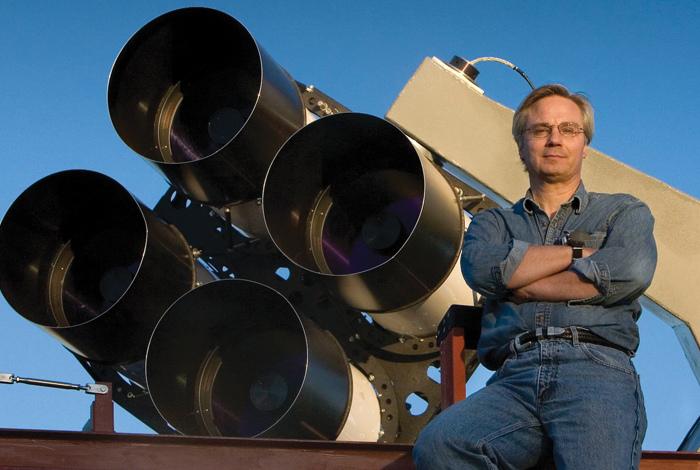
Telescope array (part of RAPTOR) captured the rare birth of a black hole in the constellation Leo
The RAPTOR (RAPid Telescopes for Optical Response) system is a network of small robotic observatories that scan the skies for optical anomalies such as flashes emanating from a star in its death throes as it collapses and becomes a black hole. An exceptionally bright flash of visible light that accompanied a powerful burst of cosmic gamma-ray emissions recently heralded the birth of a black hole in the constellation Leo. Already the event is testing some long-held assumptions about the nature of the universe.
View full Los Alamos National Laboratory press release.
August 21, 2013 — New gamma-ray observatory begins operations at Sierra Negra volcano in the state of Puebla, Mexico
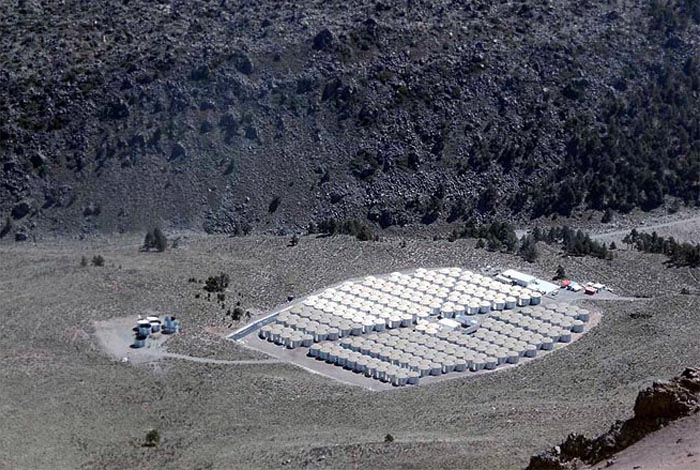
The HAWC Observatory taken in August 2013 from the summit of Sierra Negra.
The High-Altitude Water Cherenkov (HAWC) Gamma Ray Observatory has begun formal operations at its site in Mexico. HAWC is designed to study the origin of very high-energy cosmic rays and observe the most energetic objects in the known universe. “The HAWC observatory will search for signals from dark matter and to study some of the most extreme objects in the universe, such as supermassive black holes and exploding stars,” said Brenda Dingus, principal investigator and a research fellow at Los Alamos National Laboratory.
view full LANL Press Release
July 25, 2013 — Van Allen probes pinpoint driver of speeding electrons
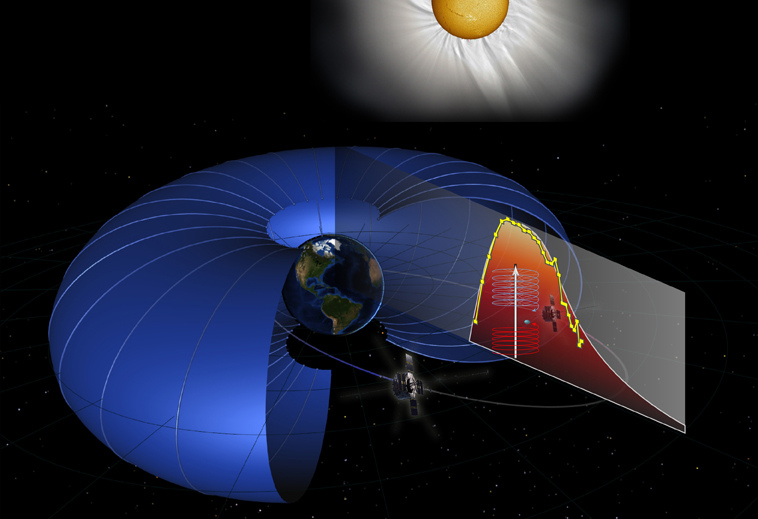
An artist's rendering of a mechanism within the Van Allen radiation belts that can accelerate electrons to satellite-killing energies.
Los Alamos researchers believe they have solved a lingering mystery about how electrons within Earth’s radiation belt can suddenly become energetic enough to kill orbiting satellites.
view full LANL Press Release
May 31, 2013 — Trillion Particle Simulation on Hopper Honored with Best Paper
In testing Hopper, a Lawrence Berkeley Laboratory team helped physicists from the University of California, San Diego, and the Los Alamos National Laboratory identify how energetic particles are generated in magnetic reconnection—the mechanism behind the aurora borealis (a.k.a. northern lights) and solar flares, as well as fractures in Earth’s protective magnetic field—fractures that allow energetic solar particles to seep into our planet’s magnetosphere and wreak havoc in electronics, power grids and space satellites.
view full NERSC Press Release
March 1, 2013 — Instruments detect never-before-seen phenomenon in Earth’s magnetosphere
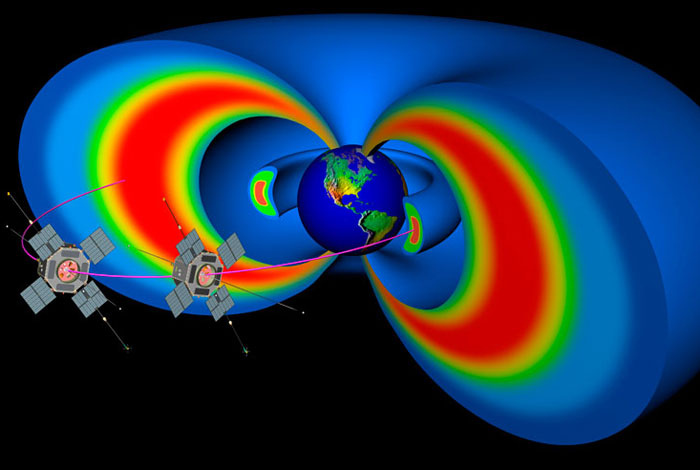
This NASA rendering depicts Earth's Van Allen radiation belts and the path of the Van Allen Probe spacecraft, which were launched in August 2012. Data from the spacecraft have confirmed a never-before-seen phenomenon—a long-lived zone of high-energy electrons residing between the inner and outer radiation belts.
Mysterious appearance of a relatively long-lived zone of high-energy electrons stored between Earth’s Van Allen radiation belts was witnessed by a team that included a trio of researchers from Los Alamos National Laboratory and one from UC Los Angeles. The surprising findings, discovered by NASA’s Van Allen Probes (formerly known as the Radiation Belt Storm Probes), were outlined in Science Express.
view full LANL Press Release
October 23, 2012 — NASA - Computer Model Shows a Disk Galaxy's Life History
A cosmological simulation run on the Pleiades supercomputer (using more than a million CPU hours) shows the development of a disk galaxy over 13.5 billion years from shortly after the Big Bang to the present.
view LANL abstract
September 8, 2011 — Los Alamos team aids understanding of astrophysical mystery
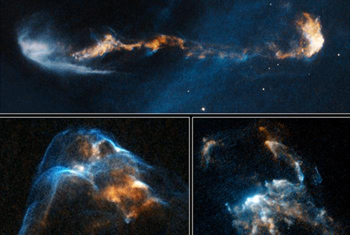
Three different stellar jets, captured by the Hubble Space Telescope.
September 8, 2011—New Hubble Space Telescope movies of gas jets from stars reveal their fast-changing inner structures. Thanks to the Los Alamos RAGE computer code and a series of supercomputers, a research team now understands more about how observed shock waves, knots, and filamentary structures in these supersonic glowing jets evolve in the stellar environment.
View the LANL Press Release




